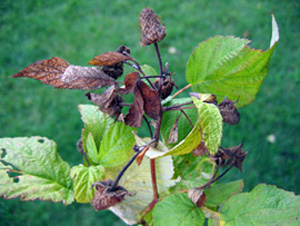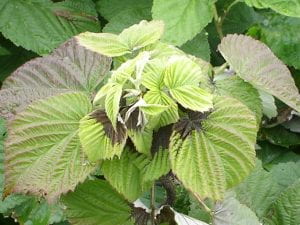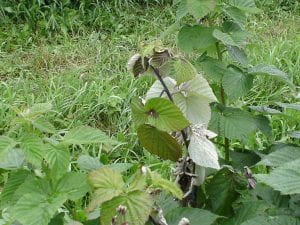Fire blight is a bacterial disease of raspberries and blackberries. Thornless blackberries seem to be particularly susceptible to this disease, caused by the bacterium Erwinia amylovora.
Primocane tips wilt and curve in a characteristic shepherd’s-crook shape

Infected tissues may be covered with bacterial ooze under warm wet weather conditions.


Early symptoms of fire blight infection can begin as brown discoloration at leaf bases.


More information:
- Raspberry Disorder; Fire Blight (University of Wisconsin)
Use these resources if you need additional help with diagnosis and to find solutions to your problem.


